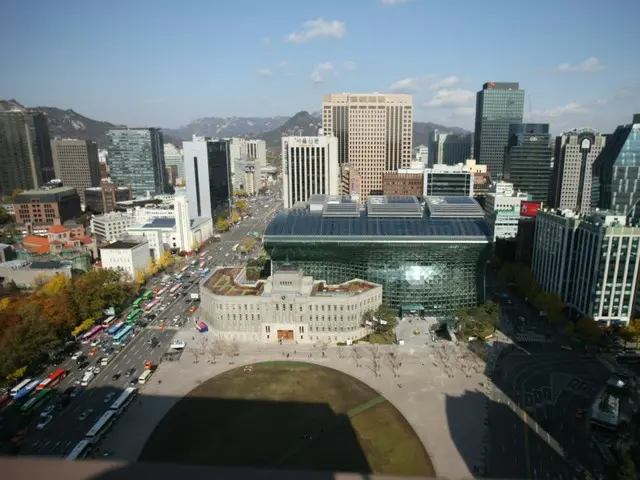Seoul Metropolitan Government held a meeting on the 24th at 2 p.m. in the main conference room of City Hall entitled "Public-Public-Military Cooperation for the Construction of an Anti-Drone System for Megacities."
Prior to this, Seoul City held the 3rd Seoul City Security Forum with the theme of "Proposals for a New Security Strategy."
In order to grasp North Korea's nuclear and missile capabilities and the threat posed by high-power electromagnetic waves (EMP), the government held two security forums last year.
The forum will focus on building an anti-drone defense system to counter the increasingly sophisticated North Korean drone threat.
The forum was held to discuss the cooperation between the private sector, government and military toward the implementation of the 1990-2002 plan. The forum was attended by Seoul Mayor Oh Sehun, Capital Defense Commander Lee Jin-woo, Seoul National Defense Commissioner General Lee Jin-woo, and other officials.
More than 200 people participated, including members of the Joint Defense Council, security policy advisory groups, and experts in the field of counter-drones. Presenters included Professor Kim Seong-woo of the Army War College, Professor Kim Ki-won of Daekyeong University,
Brigadier General Lee Man-hee, commander of the 1st Air Defense Brigade of the Capital Defense Command, took the stage. Professor Kim Seong-woo said that unmanned aircraft systems, such as drones, and corresponding large-scale drone systems will be the future of warfare.
He predicted that this would be a "game changer" that would determine the outcome of the battlefield. He went on to say that there is a possibility that a large number of devices could be mounted on drones and unmanned aircraft and used in the same way as with the spraying of dirty balloons, and that the private sector could also use the devices.
He emphasized the importance of cooperation between the government and the military. Professor Kim Ki-won presented plans for an intelligent and efficient anti-drone system using artificial intelligence (AI), as well as a system suitable for the conditions in large cities.
Lee Man-hee, commander of the capital air defense network, introduced the concept of air defense operations against drones and explained a hypothetical scenario.
Meanwhile, Seoul has seen an increase in cases of "illegal flights" where drones are illegally operated in violation of flight restriction and prohibited zone regulations.
It was revealed that drone violations in Seoul increased by an average annual rate of 52%, from 98 in 2020 to 130 in 2021, 210 in 2022, and 345 last year.
This increase is due to the widespread use of drones for leisure and industrial use. However, the increase in drone violations is also likely to increase the number of air defense and first response units' response times, which could lead to future terrorism attacks.
Lee said that if North Korea were to launch multiple simultaneous large-scale drone attacks, the military's strike system would be significantly improved.
He said it would be difficult to respond using the drone system alone, and stressed the need to build an anti-drone system for each important national facility and integrate it with military systems to create a multi-layered defense system.
The report also proposed the development of a "three-line" interception system to prepare for drone attacks. This would involve the first interception line centered on the military, the second interception line centered on the Capital Defense Command, and the third interception line centered on the Capital Defense Command.
Following the second interception line, a regionalized counter-drone system will be established as a third interception line, with the aim of integrating civilian and military information to improve drone capabilities.
Based around the Joint Air Defense Operation Control Center, information on enemy drones detected by civilians and target information secured by the military will be shared, and the system will be deployed in various locations, including the anti-aircraft gun "Chongho," anti-aircraft weapons, and local air defense radar.
To achieve this, we need to share security-certified commercial communications systems, resolve the legal basis for integrating civilian systems with the military, and resolve control tower issues.
The experts in the discussion included Kim Kwang-seok, emergency safety planning officer at the Ministry of Trade, Industry and Energy, Kang Kyung-il, military structural reform officer at the Ministry of National Defense, and Shin Hee-jun, professor at Kyungwoon University.
The two leaders discussed the direction of the development of large-scale drone systems. Kim said, "For Seoul to build the world's first integrated civil-government-military anti-drone system, we need to integrate flight information into the air defense system."
"We need to solve security issues that arise when linking the system with the military, and we need to solve the legal basis and control tower issues for integrating civilian systems with the military," he said.
He predicted that if the necessary funding and cooperation could be secured, this could become a model case for the international community.
2024/06/25 06:34 KST
Copyrights(C) Herald wowkorea.jp 104

